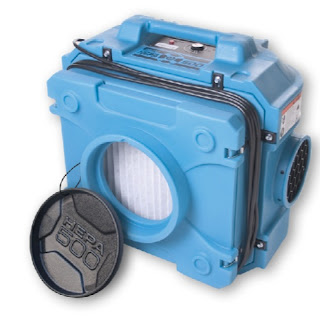There are 3
basic types of air purifier: expensive, more expensive, and OUCH. So how do you
separate out the hype and bring a breath of fresh air to the subject? It's
called caveat inhalator, or, breather beware! There seems to be an inverse
relationship between the amount of research done and the money wasted.
Does just
walking into your home make you sneeze, make your eyes water, and make your
nose run?
Then you probably need an air purifier. Sure those medications your
doctor prescribed help, but now's the time to take the next step. But with so
many choices, where do you start?
The most complex
air purifier systems are based on ultra-violet light (UV) technology. Viruses
are too small to be filtered by HEPA or traditional air purifiers. These air
purifier systems are usually installed in heating and cooling ducts and
currently start around $300, plus installation. UV air purifiers often combine
HEPA and carbon filters to clean the air of multiple toxins. Hospitals and
government buildings often use UV/HEPA combo systems. That right there should
serve as a pretty good endorsement.
Getting the Best
Cleaning an Air Purifier Offers
If you have
severe allergies and money is no object, your best bet is an air purifier that
uses a HyperHEPA filter, like the IQAir HealthPro air purifier (about $700.)
Another air purifier shown to be effective against allergens is the Friedrich
C-90A air purifier (about $500.) If you're on a tighter budget, try one of the
portable air purifiers that use an old-fashioned air filter (about $70). These
are usually smaller and clean a smaller size room, so multiple machines will be
needed for a home.
Air Purifiers
with Filters
For those in a
location where you have to dust every day, or if you're trying to reduce dirt
in your house, try an air purifier that uses an air filter like the 3M Filtrete
air purifier. Research shows that air purifiers remove dust, pet dander, and
common allergens. Smoke and many odors, however, still get through. Filter air
purifiers typically cost about $70 and filters need replacing four times a
year. These are best for small spaces, so pick up a few for your home.
Ionizing Air
Purifiers
Ionizing air
purifiers are a good choice if you have smoky rooms or if you are dealing with
odor problems. Consumer Reports, however, did find that ionizing air purifiers
are not very effective when it comes to taking getting those pesky particles
out of the air. One example of these ionizing air purifier systems is the Ionic
Breeze air purifier, which costs about $300. This air purifier takes a
different approach when it comes to air purification. First, they emit
negatively charged ions into the air. These negative ions attract the smoke and
odor particles, which are positively charged. When the positive and negative
ions connect, they form a new particle. This particle becomes too heavy to
float in the air, so it falls into the collection plate of the air purifier or
simply onto the floor. This mess is easy enough to clean out with a cloth and a
vacuum cleaner.
Low Ozone Air Purifiers
Low-ozone air
purifiers are a bit different from ionizing purifiers. These air purifiers
oxidize the pollutants in the air. As a result, your home is left with nothing
but clean, breathable oxygen. You need to be careful with low ozone air
purifiers, though, because they can be harmful to your health if they are
turned up too high. In addition, you need to watch out for the metallic smell
these air purifiers can cause. It can be a bit irritating if you have a
sensitive nose. Ozone air purifiers are usually combined with ionizing systems
and cost about $500.
Other Options
You can also
choose to use a low-tech air purifier. These have been proven to work well in
all home and office environments. They are also easy to maintain because all
you need to do is change the air filters on your air conditioning and heating
system every month. This simple procedure will reduce dust, dander, and
allergens by as much as 50%. In addition to being silent, low-tech air
purifiers are cost-effective, costing only about $20 every three months. Just
don't forget to change the filters or they become ineffective.
You can also run
a humidifier to improve the quality of the air in your home or office. These
handy machines can help reduce molds in the air. Many types and models are
available, with the average humidifier costing about $30. You will need to get
one for every room, though.
Finally, you can
try a more natural approach. Living plants can also serve as air purifiers.
These natural purifiers remove carbon monoxide, benzene, and formaldehyde.
Gasoline, oils, paints, and rubber all contain benzene - you certainly don't
want to breathe that in every day! Some great plants you can use to help
purifier your air are English Ivy, Gerbera Daisy, and Mums. Most are available
at home improvement stores and nurseries for about $10. Not surprisingly, the
more of these plants in a room, the better they are able to filter the air.
Of course with
this method, it helps to have a green thumb. Nobody wants to run out and buy
new plants every month because the old ones died.
In the
ever-increasing battle to separate not only the good air from the bad but also
the good customer from the bad money, it all comes down to one thing. Either do
your homework or pay the price.

Nav komentāru:
Ierakstīt komentāru